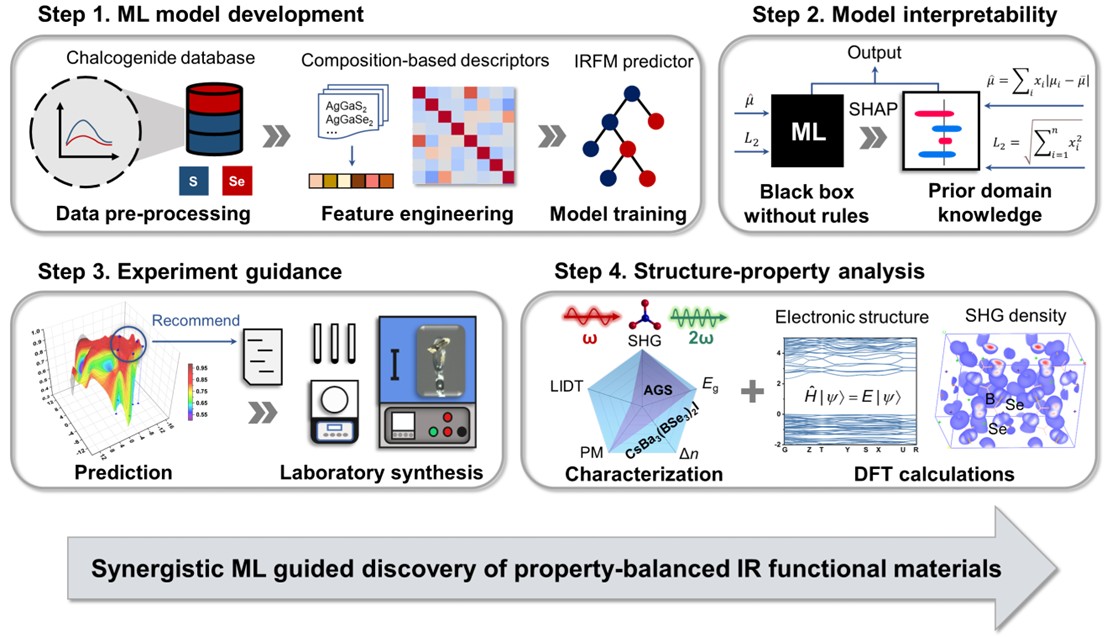Machine Learning Assisting Design of High-Performance Infrared Functional Materials
Editor: | Apr 29,2025
Infrared optoelectronic functional materials are widely used in lasers, photodetectors, and infrared imaging, forming the technological foundation of modern optoelectronics. Currently, the development of novel infrared materials largely relies on traditional trial-and-error experimental approaches. These methods are inefficient within the vast chemical space, as only a few compounds can simultaneously achieve a balance of multiple critical properties such as wide bandgap, high laser damage threshold (LIDT), and strong second-harmonic generation (SHG) response. Overcoming the limitations of conventional strategies and establishing a high-efficiency, accurate paradigm for materials design has become a pressing challenge in the field.
Recently, researchers from the Research Center for Crystal Materials, Xinjiang Technical Institute of Physics and Chemistry (XTIPC), Chinese Academy of Sciences, have made significant progress in the machine learning (ML) -assisted discovery of infrared functional materials (IRFMs). The research team developed a synergistic framework integrating interpretable ML techniques to enable targeted synthesis of infrared functional materials. Through in-depth interpretable analysis of model, the team extracted key domain knowledge for the chalcogenide system. Based on these, the researchers employed an IRFM predictor to efficiently guide the experimental synthesis of new materials, ultimately leading to the successful discovery of a family of selenoborate halides: ABa3(BSe3)2X (A = Rb, Cs; X = Cl, Br, I). These compounds exhibit well-balanced properties, including wide bandgaps, strong SHG response, moderate birefringence, and high LIDTs—demonstrating great potential as high-performance IRFMs. Structure–property relationship analysis revealed that the [BSe3] unit is a critical contributor to the exceptional optical properties, highlighting its potential as an active building block for future exploration of high-performance IRFMs. This study overcomes the limitations of conventional trial-and-error exploration, opening a new path for AI-driven design of functional crystal materials and promoting deeper integration between materials science and machine learning.
The related research has been published in Advanced Science under the title: “Synergistic Machine Learning Guided Discovery of ABa3(BSe3)2X (A = Rb, Cs; X = Cl, Br, I): A Promising Family as Property-Balanced IR Functional Materials” The Xinjiang Technical Institute of Physics and Chemistry is the sole corresponding affiliation. Professor Shilie Pan and Associate Professor Guangmao Li served as corresponding authors, and Ph.D. candidate Yihan Yun was the first author. The study was supported by grants from the National Natural Science Foundation of China, the Chinese Academy of Sciences and the Xinjiang Uygur Autonomous Region.

附件下载:
 (86) 991-3838931
(86) 991-3838931 lhskj@ms.xjb.ac.cn
lhskj@ms.xjb.ac.cn (86)991-3838957
(86)991-3838957 40-1 Beijing Road
Urumqi, XinjiangChina
40-1 Beijing Road
Urumqi, XinjiangChina